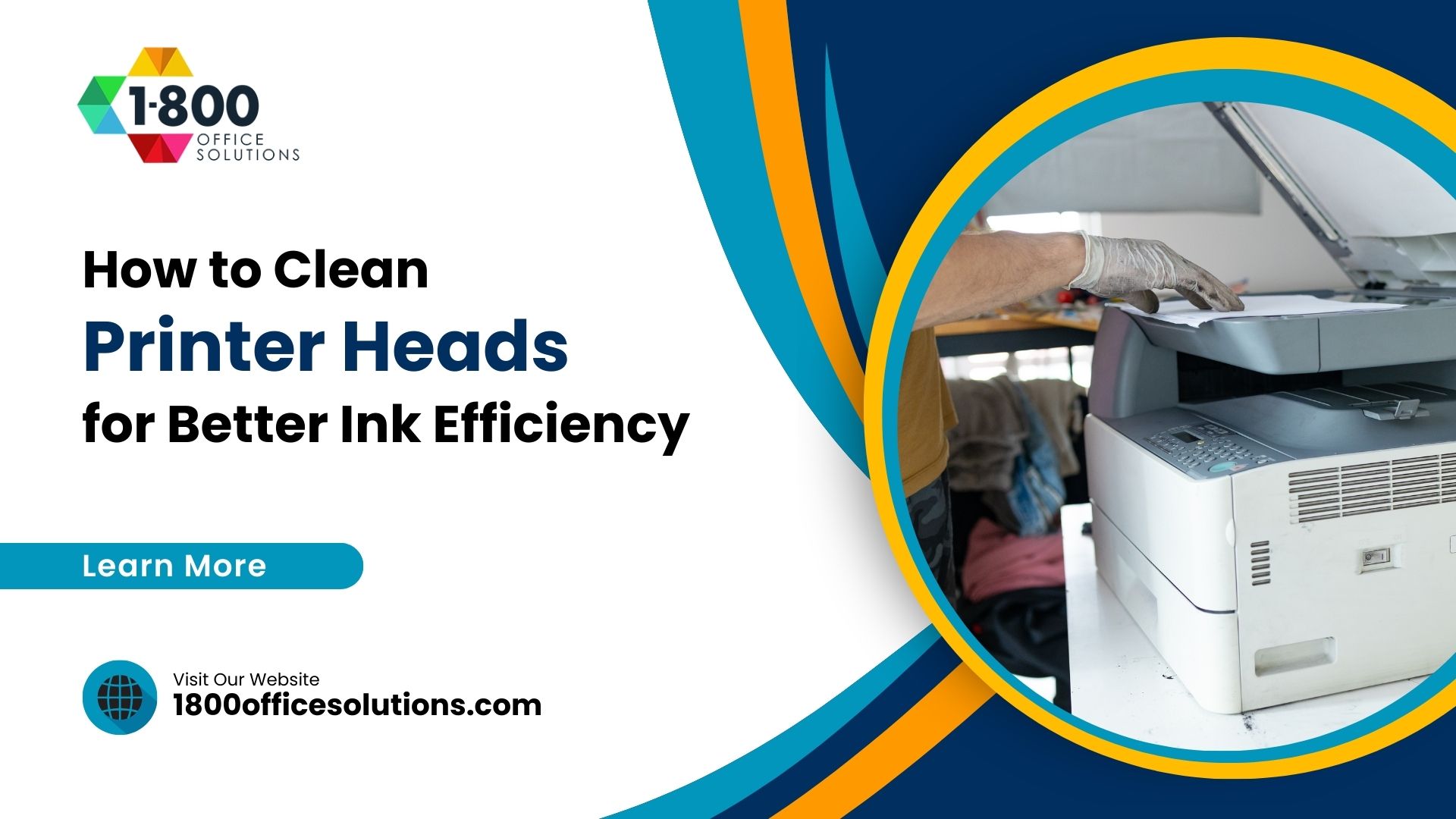Is Your Printer Waste Cartridge Full? Discover the Secret Hack to Double Its Lifespan!
Introduction
In today’s digital age, printers have become an indispensable part of our daily lives, both in the office and at home. One of the components that often goes unnoticed, yet plays a crucial role in the printer’s functionality, is the waste cartridge. This component, also known as the waste toner container, is responsible for collecting excess toner that doesn’t make it onto the paper during the printing process. In this blog post you’ll learn if your Printer waste cartridge full and how to empty to increase it’s life span.
Maintaining the waste cartridge is of utmost importance for several reasons:
- Efficiency: A well-maintained waste cartridge ensures that the printer operates at its optimal efficiency.
- Print Quality: Over time, if not replaced or cleaned, a full waste cartridge can affect the quality of your prints.
- Longevity: Regular maintenance and timely replacement of the waste cartridge can extend the lifespan of your printer, saving you money in the long run.
Understanding the Printer Waste Cartridge Full
What is a waste cartridge?
A waste cartridge, often referred to as a waste toner container, is a compartment within a printer designed to collect any unused toner that doesn’t get transferred onto the paper during the printing process. This excess toner, known as waste toner, can come from various sources:
- Overfilling of toner during a print job
- Toner spillage during cartridge replacement
- Incomplete transfer of toner to paper
The primary role of the waste cartridge is to ensure that this excess toner is kept separate from the new toner, preventing any potential contamination. By doing so, it ensures that every print job is of the highest quality.
Signs that your waste cartridge is full
Knowing when to replace the waste cartridge is crucial for maintaining your printer’s performance. Here are some signs to watch out for:
- Printer Notifications: Modern printers come with a display screen that will show a message or notification indicating when the waste cartridge is nearing its capacity. This is often accompanied by phrases like “Replace Waste Toner” or “Waste Cartridge Full.”
- Print Quality Issues: If you start noticing streaks, blotches, or uneven toner distribution on your prints, it might be an indication that the waste cartridge is full and affecting the print quality.
- Physical Inspection: In some cases, especially with older printer models that might not have a display screen, a physical inspection might be necessary. If you remove the waste cartridge and it feels heavy or you can see the toner nearing the top, it’s time to replace it.
Understanding the role and importance of the waste cartridge is crucial for anyone looking to get the best performance out of their printer. Regular maintenance, timely replacement, and being vigilant about the signs of a full cartridge can go a long way in ensuring high-quality prints and a longer printer lifespan.
Extending the Lifespan of Your Waste Cartridge
Why you should care about extending its lifespan
In the realm of printing, the waste cartridge often goes unnoticed. Yet, its maintenance can lead to significant benefits:
- Cost Savings: Regularly replacing the waste toner container can become an expensive affair. By extending its lifespan, you can save on the costs of purchasing a new waste toner container frequently.
- Environmental Benefits: Every toner cartridge that’s thrown away contributes to environmental waste. By prolonging the life of your waste cartridge, you’re not only saving money but also reducing your carbon footprint.
The secret hack to double its lifespan
While many people think that once the message appears indicating the waste toner container is full, it’s time for a replacement, there’s a secret hack that can help double its lifespan.
Detailed step-by-step guide:
- Safety First: Before you begin, ensure the printer is turned off and unplugged. Wear gloves to avoid direct contact with toner.
- Remove the Waste Cartridge: Open the printer panel and carefully pull out the waste cartridge using the handle on top.
- Empty the Cartridge: Over a trash bag, gently tap the cartridge to remove any loose toner. Ensure you do this in a well-ventilated area to avoid inhaling toner particles.
- Clean the Cartridge: Using a soft brush, clean the cartridge to remove any residual toner. Remember, water will set the toner, so avoid using any liquids.
- Seal and Store: Once cleaned, seal the cartridge properly and store it in a cool, dry place away from direct sunlight.
- Reinsert the Cartridge: Insert the cleaned waste cartridge back into the printer, ensuring it fits snugly.
Precautions to take
- Never expose the waste cartridge to open flame. Toner is flammable.
- If toner spills on clothing, wash immediately with cold water. Hot water will set the toner, making it impossible to remove.
- Always handle the waste cartridge with care to avoid any toner spillage.
Maintenance Tips for Your Waste Cartridge
Maintaining your waste cartridge is not just about prolonging its life but ensuring that your printer consistently delivers top-notch performance. Here are some detailed tips to help you get the most out of your waste cartridge:
Regular Cleaning
Dust, debris, and residual toner can accumulate in the waste toner box over time. Even if it isn’t full, it’s essential to give it a thorough cleaning every few months. This not only ensures that the cartridge functions optimally but also prevents potential blockages or print quality issues. Use a soft brush or a lint-free cloth to gently remove any accumulated toner or debris.
Proper Storage
If you’ve invested in an extra waste toner cartridge, it’s crucial to store it correctly. Keep it in its original packaging to protect it from dust and potential damage. Find a cool, dry place away from direct sunlight or extreme temperatures. This ensures the cartridge remains in prime condition until you’re ready to use it.
Avoiding Common Mistakes
- Message Alerts: When your printer displays a message about the waste cartridge, don’t dismiss it. It’s an early indication that maintenance or replacement might be needed soon.
- Overfilling: It might be tempting to push the limits of your waste cartridge, but overfilling can lead to leaks, spills, and even damage to your printer. Always adhere to the manufacturer’s guidelines regarding capacity.
- Sealing: After cleaning or checking the cartridge, ensure it’s sealed properly before reinserting it. An improper seal can lead to toner leaks, which can be messy and potentially harm the printer’s internal components.
In essence, the waste cartridge, though often overlooked, plays a pivotal role in your printer’s health. By following these maintenance tips, you not only extend its lifespan but also ensure that every print job is of the highest quality.
What People Also Ask
How often should I replace my waste cartridge?
Answer: The frequency of replacing your waste cartridge largely depends on your printer’s usage. Typically, printers are equipped with sensors that display a message on the screen when the cartridge is nearing its capacity. This is a clear indication that it’s time for a replacement. However, it’s not just about waiting for the message to appear. With consistent and regular maintenance, you can significantly extend the lifespan of your waste cartridge. By cleaning and ensuring it’s free from any blockages, you can optimize its performance and delay the need for immediate replacement.
Can I clean the waste cartridge myself?
Answer: Absolutely! Cleaning the waste cartridge is a task that many users can undertake on their own. However, it’s crucial to follow the manufacturer’s guidelines to ensure you don’t inadvertently damage the cartridge or the printer. The steps provided above offer a general approach, but always refer to your printer’s manual or online support for model-specific instructions. Remember, regular cleaning can enhance the cartridge’s efficiency and prolong its life.
Are there any risks to extending the lifespan of the waste cartridge?
Answer: Extending the lifespan of your waste cartridge, when done correctly, poses minimal risks. The key is to ensure that the cartridge is maintained properly. If not, it can lead to print quality issues, such as streaks or uneven toner distribution. It’s essential to monitor the quality of your prints regularly. If you start noticing any decline in print quality, it might be an indication that the cartridge needs replacement. While extending the cartridge’s life is cost-effective and environmentally friendly, it should never come at the expense of print quality. Always prioritize the printer’s performance and output.
Conclusion
The waste cartridge often remains overshadowed by other prominent components of a printer, yet its significance cannot be understated. This seemingly inconspicuous part plays a pivotal role in ensuring the smooth operation of your printer. When maintained correctly, it not only guarantees the production of high-quality prints but also translates to substantial cost savings in the long run.
Beyond the monetary aspect, there’s an environmental angle to consider. In a world grappling with waste management challenges, every cartridge that’s extended in its life means one less item contributing to electronic waste. By being diligent in the care of your waste cartridge, you’re not just ensuring optimal printer performance but also championing a cause for environmental sustainability.
Moreover, adopting the right maintenance practices isn’t just about prolonging the cartridge’s life; it’s about ensuring that every print job meets the highest standards of quality. In essence, it’s a commitment to excellence.
In conclusion, while the waste cartridge might appear as just another replaceable part of your printer, its proper care and maintenance have far-reaching implications. Every effort made in its upkeep is a stride towards cost-efficiency, environmental responsibility, and a commitment to quality. Embrace these practices, and you’re not just optimizing your printer’s performance but also contributing to a greener, more sustainable future.












